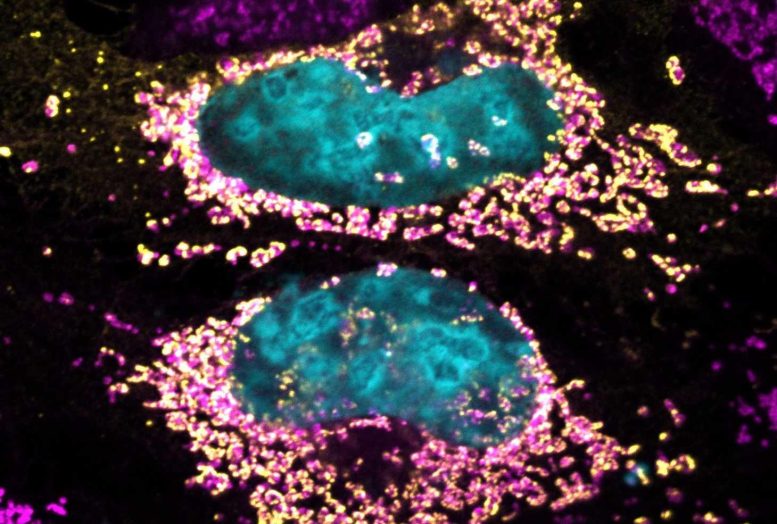Researchers at the University of São Paulo and Australian colleagues have made a significant discovery regarding a previously unidentified protein produced by Coxiella burnetii, a Gram-negative intracellular bacterium. This breakthrough suggests potential new treatments for autoimmune diseases and cancer.
Mitochondrial Dysfunction and Diseases:
The researchers found a unique bacterial protein, Mitochondrial Coxiella Effector F (MceF), capable of maintaining human cell health even under a heavy bacterial burden. This discovery holds promise for developing treatments for diseases linked to mitochondrial dysfunction, including cancer and autoimmune disorders. Mitochondria are essential for cellular energy production.
Interaction with GPX4:
After invading host cells, C. burnetii releases MceF, which interacts with glutathione peroxidase 4 (GPX4), an antioxidant enzyme in mitochondria. This interaction improves mitochondrial function by promoting an antioxidant effect, preventing cell damage and death caused by pathogen replication inside mammalian cells.
Prolonged Cell Longevity:
The modulation of GPX4 by MceF allows mammalian cells to live longer, even when infected with a large bacterial burden. This discovery reveals a strategy used by C. burnetii to keep cells healthy during intense replication.
Treatment Potential:
The study opens avenues for potential treatments targeting mitochondrial dysfunction and diseases associated with Coxiella burnetii infections.
Disease Context:
C. burnetii is the causative agent of Q fever, a serious infection with economic and public health implications. The bacterium efficiently invades and controls immune cells, subverting cell functions.
Research Continuation:
The researchers plan to further investigate other proteins of interest and conduct biochemical studies to deepen understanding of how MceF influences GPX4.
Multiple-Choice Questions (MCQs):
- What is the name of the previously unidentified protein produced by Coxiella burnetii?
a. Mitochondrial Coxiella Effector F (MceF)
b. Glutathione Peroxidase 4 (GPX4)
c. Coxiella protein X
d. Mitochondrial oxidase A (MoxA)
Answer: a. Mitochondrial Coxiella Effector F (MceF) - Which enzyme does MceF interact with to improve mitochondrial function?
a. Catalase
b. Superoxide dismutase
c. Glutathione Peroxidase 4 (GPX4)
d. Cytochrome c
Answer: c. Glutathione Peroxidase 4 (GPX4) - What is the potential impact of the discovered protein on cell longevity?
a. Shortens cell lifespan
b. No effect on cell longevity
c. Prolongs cell longevity
d. Induces programmed cell death
Answer: c. Prolongs cell longevity - Which bacterial infection is caused by Coxiella burnetii?
a. Salmonella
b. Tuberculosis
c. Q fever
d. E. coli infection
Answer: c. Q fever
